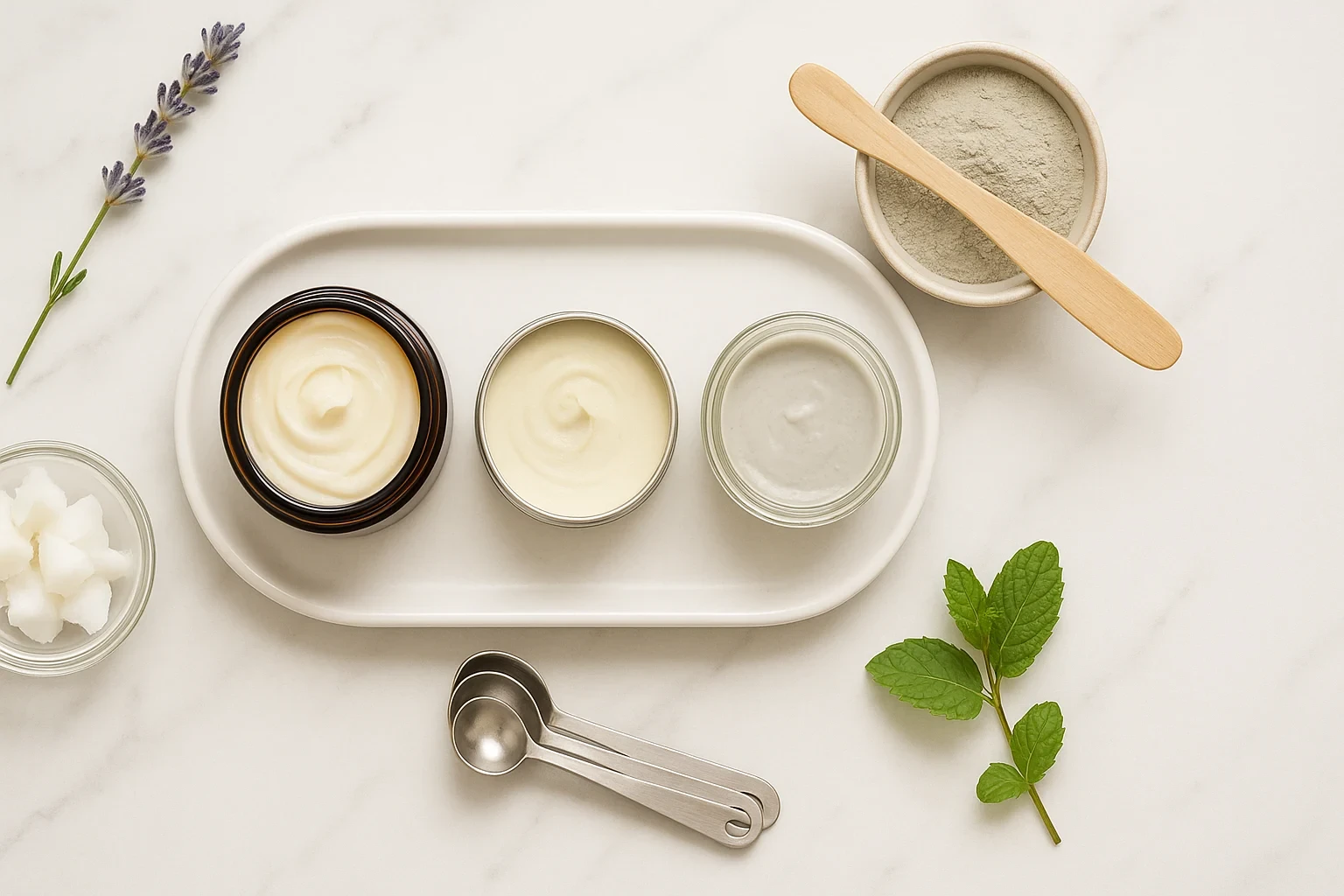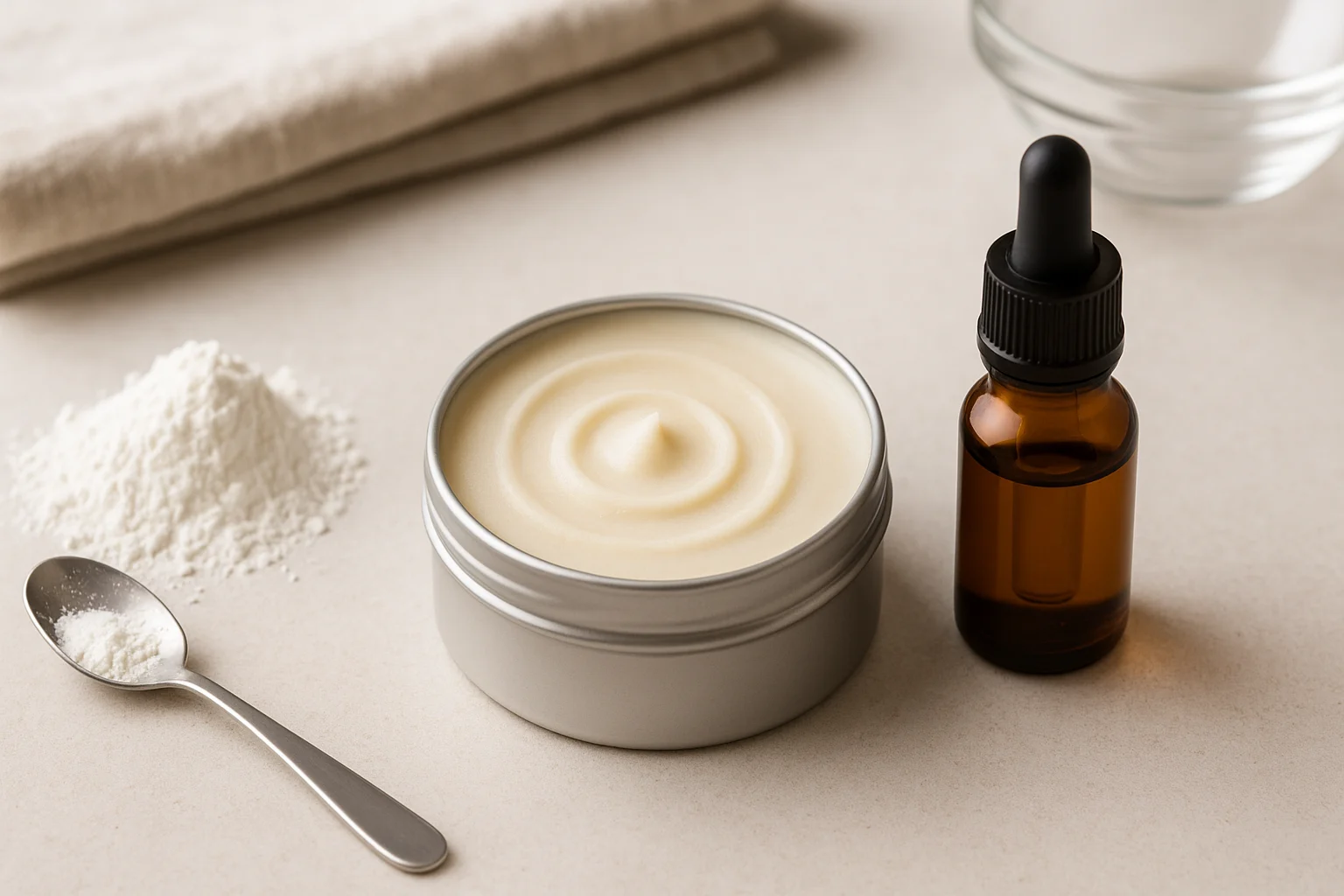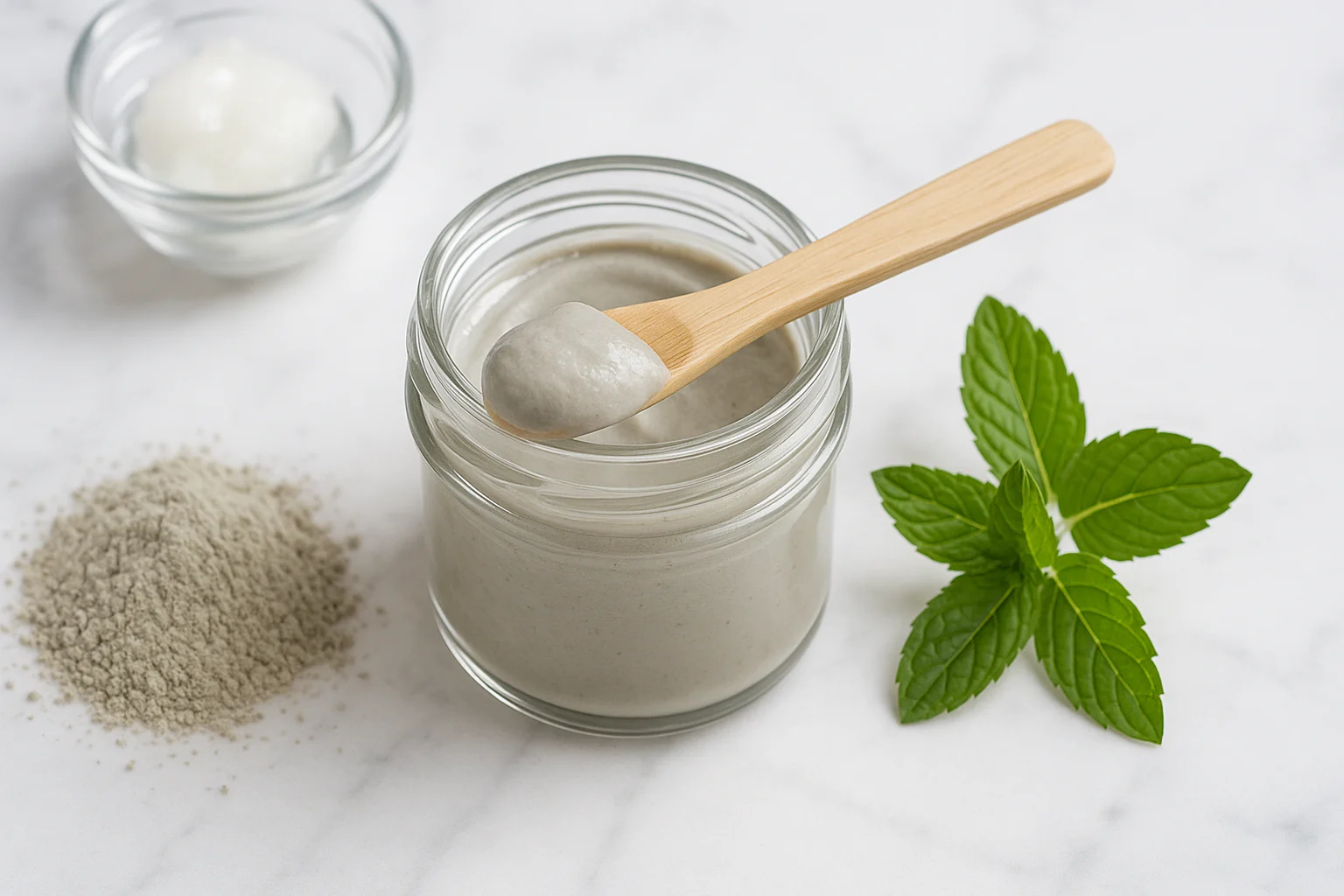
Want a cleaner routine without the markup? With simple natural swaps, diy beauty products let you control ingredients, save money, and cut waste. Many store-bought items list chemicals you don’t need—this guide shows friendly, no-fluff ways to make everyday essentials at home. For the bigger wellness picture, see our home remedies guide.
Your Best-Fit DIY Beauty Tool
Answer a few quick questions to get a tailored suggestion.
What’s your top goal right now?
💡 Try adjusting one ingredient at a time for easier troubleshooting.
Table of Contents
- Key Takeaways
- Why Go DIY with Your Beauty and Hygiene?
- Understanding Your Ingredients: The DIY Pantry Staples
- DIY Natural Deodorant Recipes: Stay Fresh, Naturally
- Homemade Natural Toothpaste Recipes: A Brighter Smile, The Natural Way
- DIY Natural Skin Care Recipes: Pamper Your Skin, Head to Toe
- Safety First: Important Considerations for DIY Beauty
- Tips for Success: Starting Your DIY Journey in 2025
- Frequently Asked Questions
- Conclusion
Tip: Keep a small notebook for batches—date, ingredients, and tweaks make it easy to repeat your best formulas.
Key Takeaways
- Save Money & Stay Healthy: Making your own DIY routines can significantly cut down on expenses while allowing you to control ingredients, avoiding harsh chemicals often found in commercial products.
- Simple, Natural Ingredients: Most homemade recipes rely on common, affordable ingredients like coconut oil, baking soda, shea butter, and essential oils, which are beneficial for both skin and hygiene.
- Easy-to-Follow Recipes: This guide shares step-by-step homemade beauty recipes for natural deodorant, toothpaste, face masks, scrubs, and body butters.
- Prioritize Safety & Customization: Always patch test, sterilize tools, and store products correctly. Adjust recipes to suit your skin type and preferences.
- Sustainable & Eco-Friendly: Going DIY reduces packaging waste and your carbon footprint, contributing to a more sustainable lifestyle in 2025 and beyond.

Why Go DIY with Your Beauty and Hygiene?
The decision to switch to homemade beauty products is often sparked by a desire for change. Maybe you’re tired of reading ingredient labels that look like a science experiment, or perhaps you’re looking for ways to live more sustainably. Whatever your reason, making your own products offers a host of fantastic benefits.
Cost Savings 💰
High-quality beauty and hygiene products can be expensive. When you make your own, you’re buying raw ingredients in bulk, which often means a much lower cost per use. For example, a tub of coconut oil can be used for deodorant, toothpaste, and body moisturizer, making it incredibly economical. Switching to DIY could save you hundreds of dollars in 2025 alone. To stretch costs even further, consider buying natural ingredients in bulk.
“Making your own beauty products isn’t just a hobby; it’s a smart financial move that pays off by reducing your daily expenses.”
Healthier Ingredients 🌱
Commercial products often contain parabens, phthalates, synthetic fragrances, and artificial colors. When you make your own, you control what goes in—choosing organic, food-grade ingredients for peace of mind.
Environmental Friendliness 🌍
Most products come in plastic packaging that ends up in landfills. By going DIY with your beauty products, you can reduce plastic waste by reusing glass jars and metal tins. Many plant-based ingredients are biodegradable, too.
Understanding Your Ingredients: The DIY Pantry Staples
Coconut Oil: The Multi-Tasker
This tropical oil is deeply moisturizing and may offer mild antimicrobial benefits based on lab studies.
- Uses: Base for deodorant, toothpaste, moisturizer, hair mask, makeup remover.
- Benefits: Hydrates, helps fight bacteria, gives products a smooth texture.
Baking Soda: The Gentle Cleanser
Baking soda (sodium bicarbonate) is a mild abrasive and a natural deodorizer.
- Uses: Deodorant, toothpaste, gentle exfoliant, bath soak.
- Benefits: Neutralizes odors, gently cleanses, may help lift surface stains when used gently.
Shea Butter & Cocoa Butter: Skin Superheroes
- Shea Butter: Nourishing, anti-inflammatory, helps heal dry skin.
- Cocoa Butter: Great for elasticity and reducing scars; naturally fragrant.
- Uses: Body butters, lotions, lip balms, solid deodorants.
- Benefits: Intense moisturization, skin protection, soothing properties.
Essential Oils: Nature’s Scents & Boosters
Concentrated plant extracts used for fragrance, therapeutic benefits, and as natural preservatives.
- Popular choices: Lavender, Tea Tree, Peppermint, Frankincense, Lemon/Orange (use caution with sun exposure).
- Important: Always dilute in a carrier oil (coconut or jojoba). Use high-quality, pure oils.
Other Key Players
- Arrowroot Powder/Cornstarch: Absorbs moisture and smooths texture.
- Bentonite Clay: Detoxifying; great for masks and optional in toothpaste.
- Carrier Oils (Jojoba, Almond, Olive): Dilute essential oils and moisturize skin.
Many of these staples also power thrifty cleaning formulas—see our homemade cleaning solutions for crossover uses.
DIY Natural Deodorant Recipes: Stay Fresh, Naturally
Start with a homemade natural deodorant recipe if you want sweat to work naturally while odor-causing bacteria are kept in check.
Why Switch to Natural Deodorant?
Traditional antiperspirants block sweat glands with aluminum compounds. Natural alternatives focus on absorbing moisture and neutralizing odor—let your body function naturally. You may experience a short adjustment period.
Recipe 1: Homemade Natural Deodorant Recipe (Simple Cream)
Ingredients:
- ¼ cup Coconut Oil
- ¼ cup Baking Soda
- ¼ cup Arrowroot Powder
- 10–15 drops Essential Oil (Tea Tree, Lavender, or Lemongrass)
- Small glass jar or tin
Instructions:
- Melt coconut oil over low heat.
- Mix baking soda and arrowroot in a bowl.
- Stir in melted oil until smooth.
- Add essential oils once slightly cooled; stir.
- Pour into jar; cool to set.
Tips: Apply a pea-size amount. Adjust texture with more oil or arrowroot. Refrigerate in hot climates.
Recipe 2: Sensitive Skin Deodorant (Baking Soda-Free)
Ingredients:
- ¼ cup Shea Butter
- 2 tbsp Coconut Oil
- ¼ cup Arrowroot Powder
- 1 tbsp Bentonite Clay (optional)
- 5–10 drops Essential Oil (Lavender, Frankincense)
Instructions: Melt shea and coconut oil; combine with dry ingredients; add essential oils; pour and set.
Storage & Shelf Life: Store cool and dry; typically lasts 3–6 months.
Homemade Natural Toothpaste Recipes: A Brighter Smile, The Natural Way
Why Make Your Own Toothpaste?
Homemade simple toothpaste skips dyes and foaming agents yet still leaves your mouth feeling clean.
Recipe 1: Homemade Natural Toothpaste (Basic Whitening)
Ingredients:
- ¼ cup Coconut Oil (softened)
- 2–3 tbsp Baking Soda
- 10–15 drops Peppermint Essential Oil (or Spearmint)
- Optional: ½ tsp Xylitol
Instructions: Mix oil and baking soda to a smooth paste; add essential oil and xylitol; store in a lidded jar.
Tips: Adjust baking soda for taste; keep water out of the jar; refrigerate if too soft.
Recipe 2: Remineralizing Toothpaste
Ingredients:
- ¼ cup Coconut Oil (softened)
- 2 tbsp Bentonite Clay
- 1 tbsp Baking Soda (optional)
- 1 tsp Calcium Carbonate Powder (food-grade)
- 15–20 drops Peppermint or Spearmint Essential Oil
- ½ tsp Xylitol (optional)
- A few drops Stevia (optional)
Instructions: In a non-metal bowl, combine dry ingredients; mix in oil to form a paste; add flavoring; store sealed.
Safety Notes & Dentist Consultation: Use food-grade ingredients. Baking soda can be abrasive—use gently and consider less if you have sensitive enamel. Homemade toothpaste is typically fluoride-free; discuss with your dentist to ensure cavity prevention needs are met. See the CDC fluoride guidance for brushing recommendations.
Storage & Shelf Life: Store sealed at room temp; typically lasts 3–6 months. Discard if odor, color, or texture changes. Keep water out.

DIY Natural Skin Care Recipes: Pamper Your Skin, Head to Toe
If you’re building a diy natural skin care routine, start simple—one mask, one scrub, and a moisturizer you’ll actually use.
Face Masks for Every Skin Type
Recipe 1: Hydrating Honey & Avocado Mask 🥑
Ingredients: ½ ripe avocado (mashed), 1 tbsp raw honey, 1 tsp olive oil (optional).
Instructions: Mash avocado; mix in honey and oil; apply 15–20 minutes; rinse warm water.
Recipe 2: Detoxifying Clay Mask ✨
Ingredients: 1 tbsp bentonite (or rhassoul) clay, 1–2 tbsp apple cider vinegar (or water), 2–3 drops tea tree (optional).
Instructions: Mix in non-metal bowl to a smooth paste; apply 10–15 minutes; rinse and moisturize. Temporary redness can be normal.
Gentle Face & Body Scrubs
Recipe 1: Coffee & Coconut Oil Body Scrub ☕
Ingredients: ½ cup used coffee grounds (slightly dried), ¼ cup melted coconut oil, 1 tbsp brown sugar (optional), 5–10 drops citrus essential oil (optional).
Instructions: Combine dry ingredients; stir in oil and optional EO; massage on damp skin; rinse thoroughly.
Recipe 2: Sugar & Lemon Lip Scrub 🍋
Ingredients: 1 tbsp sugar, 1 tsp coconut oil, ½ tsp honey, 2–3 drops lemon EO (or tiny squeeze of lemon).
Instructions: Mix to paste; massage on lips 30 seconds; rinse or gently wipe off.
Nourishing Body Butters & Lotions
Recipe 1: Whipped Shea Butter Body Butter 🧈
Ingredients: ½ cup shea butter, ¼ cup coconut oil, 2 tbsp almond (or jojoba) oil, 10–20 drops EO.
Instructions: Melt oils; chill until partially set; whip 5–10 minutes to fluffy; add EO; jar it.
Recipe 2: Simple Lotion Bar
Ingredients: ½ cup shea butter, ½ cup coconut oil, ½ cup beeswax pellets, 10–20 drops EO, silicone molds.
Instructions: Melt together; add EO off heat; pour into molds; cool to set.
Patch Testing & Customization
Patch test new DIY formulas on a small area (inner arm/behind ear) for 24 hours. Customize recipes for your skin: add richer oils for dry skin; reduce or swap essential oils if sensitive.
Safety First: Important Considerations for DIY Beauty
Sterilization & Cleanliness
Clean and sterilize bowls, spoons, and jars (hot, soapy water then boiling rinse or dishwasher). This helps prevent contamination and extends shelf life. For budget-friendly sanitizing tips, check our frugal cleaning hacks.
Ingredient Quality
Use high-quality, preferably organic, food-grade ingredients. Choose reputable suppliers.
Patch Testing
Always patch test before broader use. Stop if redness or irritation occurs.
Storage & Shelf Life
- Store in airtight containers (preferably glass) in a cool, dark place.
- Refrigerate products with water or fresh ingredients.
- Use clean hands or a spatula to scoop; discard if you notice off smells, color, or mold.
Consulting Professionals
For persistent skin issues or ingredient concerns (e.g., pregnancy), consult a dermatologist. For oral health, see your dentist regularly, especially if going fluoride-free.
Tips for Success: Starting Your DIY Journey in 2025
Start Small
Master one product (like deodorant or a face mask) before expanding.
Research & Learn
Learn what each ingredient does and how it benefits your skin or hygiene. For a broader savings plan across categories, browse the Frugal Living Handbook.
Experiment & Adjust
Treat recipes as guidelines. Tweak ratios, swap essential oils, and keep notes on results.
Keep it Simple
You don’t need exotic ingredients. Many effective products use just a few pantry staples.
Frequently Asked Questions
Conclusion
Embarking on your journey to create your own beauty products is more than a trend—it’s a mindful choice that benefits your health, wallet, and the planet. From crafting natural deodorant and toothpaste to pampering your skin with masks and body butters, you’re taking control of what goes on your body. Gather your ingredients, follow these easy homemade beauty recipes, and get ready to glow naturally, sustainably, and economically.
This diy beauty products guide is for general education and isn’t medical or dental advice. For persistent skin issues, sensitivities, or oral-health questions, consult a licensed dermatologist or dentist. Follow safe handling, patch-test new formulas, and discontinue use if irritation occurs.